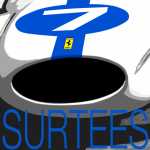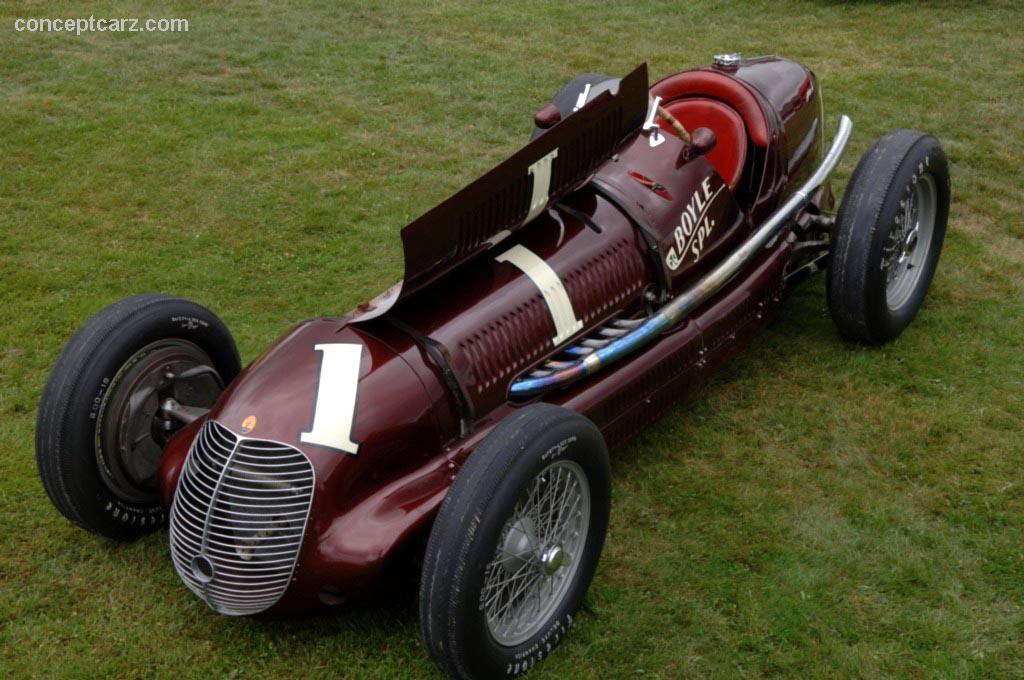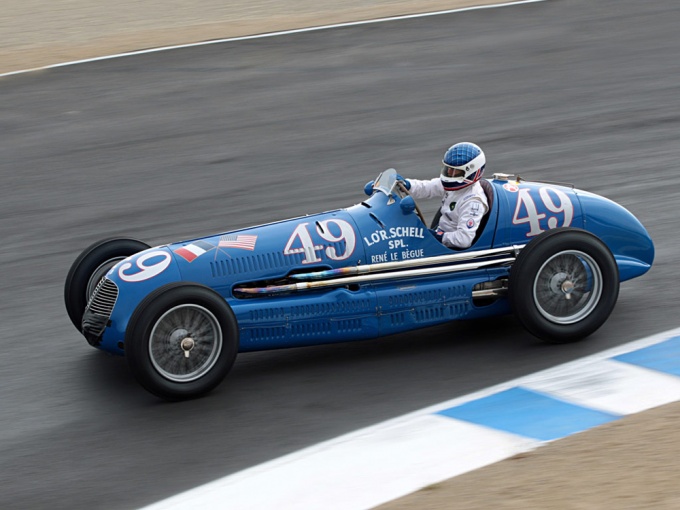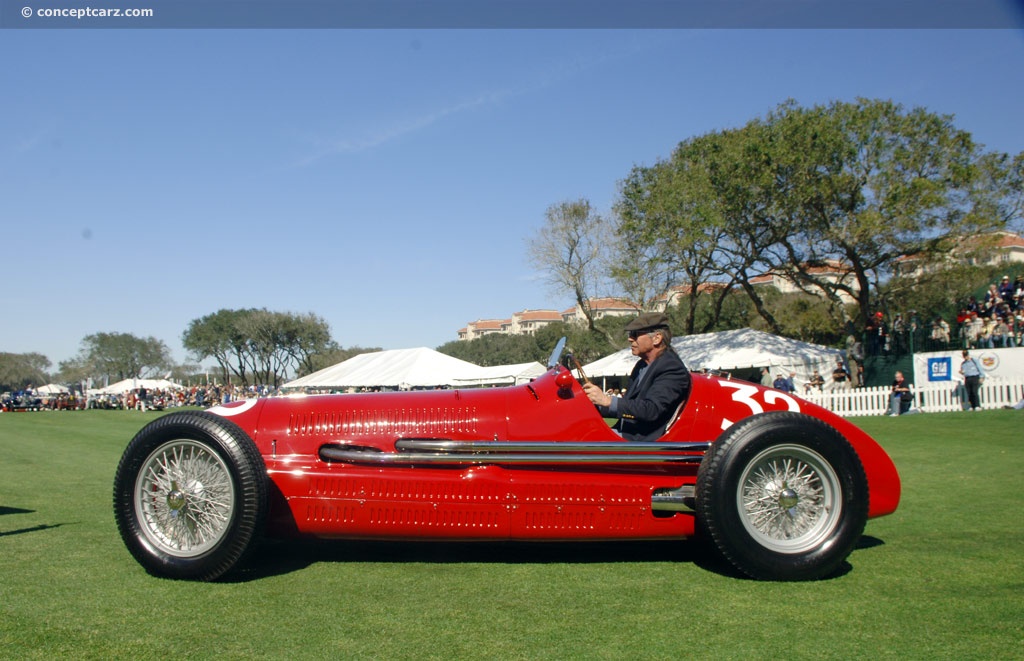Post by 1961redlegs on May 11, 2016 18:01:56 GMT -5
I just finished this replica this evening of the Maserati René LeBegue and René Dreyfus raced to tenth in the 1940 Indianapolis 500.
This car has an interesting story and I hope you don't mind a history lesson. By 1940 Europe found itself at war. Poland fell to the Germans and Soviets in the autumn of 1939 and old allies England, France and Belgium once again stared across the Western Front at their German foes.
In an effort to boost morale, American expatriate and racing fan Lucy O'Reilly Schell suggested that two French drivers go to the U.S. and compete in the Indianapolis 500. The French government agreed and tabbed Grand Prix star René Dreyfus and up-and-comer René LeBegue to drive two Maseratis procured for the race.
One may ask why in the midst of the opening of the European portion of the most devastating war in history were two men in military service allowed to galavant off to Indianapolis and race the 500. While it was true there was a war on, but nothing was happening. This was a period alternately called the "Phony War", "Sitzkreig", "Twilight War", and the "Funny War." At this stage all was indeed quiet on the Western Front, both armies staring at one another but not actively engaged in combat. For seven months this was the status of operations. One side was not yet willing (the Allies) and the other not yet ready (the Germans) for a fight. Two men could ostensibly be spared.
Both drivers arrived and through a misunderstanding Dreyfus took a qualifying time that didn't get him into the field. In spite of attempts to let Dreyfus run on behalf of the drivers the officials stated it would not be fair to let him run. As it was LeBegue's engine blew in final practice so Dreyfus' engine went into LeBegue's car and both drove equal 250-mile stints in the car and finished tenth behind Wilbur Shaw's second consecutive win.
By then the French people could care less of the result. Germany invaded in the interim. The attack went surprisingly well, sending the Allies reeling. The armies were split and by the time of the 500 the British were evacuating Dunkirk and preparing for the onslaught they dreaded would come. Churchill had replaced Chamberlain as the Prime Minister. The French government had fled Paris and would surrender not long after. As well as the two Renés acquitted themselves, it didn't change the fact that France and Europe were in the midst of a nightmare.
LeBegue came back to the 500 in 1941 with a Talbot but couldn't make the field. He survived the war only to die by electrocution while taking a bath in 1946. Dreyfus stayed in America and opened a restaurant in New York popular with racers. Lucy O'Reilly Schell's son became the first American to get a podium in Formula One. The Allies liberated France in 1944 and defeated Germany in 1945. Racing the world over resumed, in Europe and Indianapolis.
The car is a new Gary Doucette kit painted Tamiya French Blue. The kit went together with no real trouble and was a fun build. The decals are great, however the bigger "49s" meant for the tail of the car are actually better suited based on the photos for the hood and I've placed them there. But that's a small quarrel. Thanks for looking!
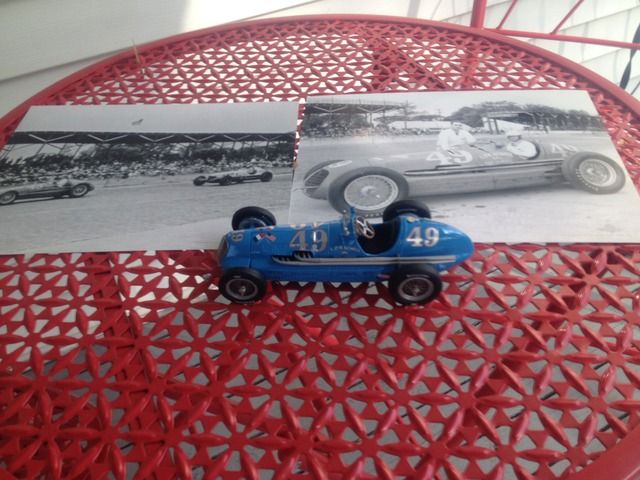
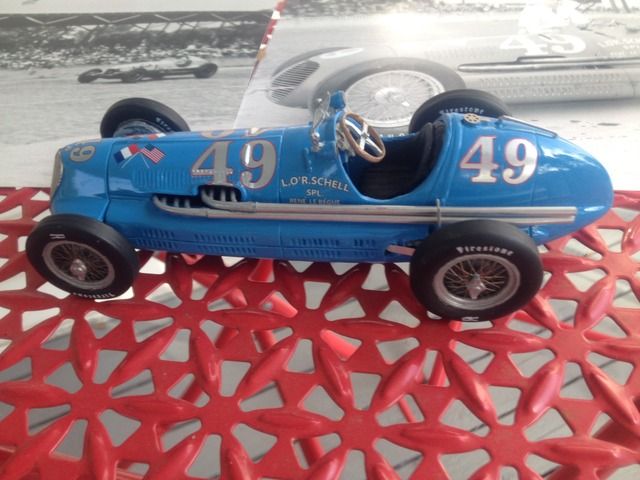
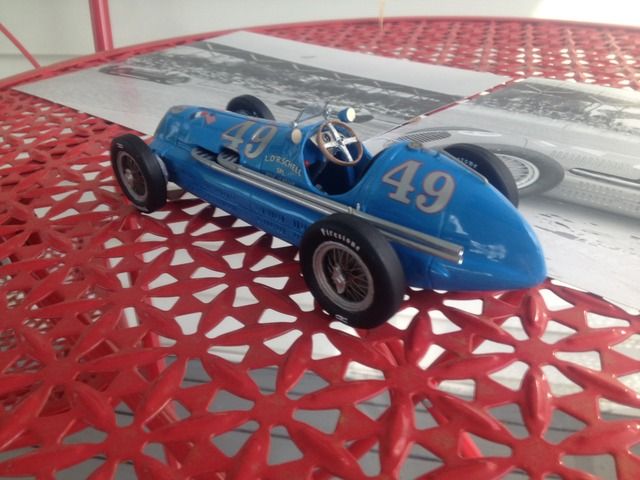
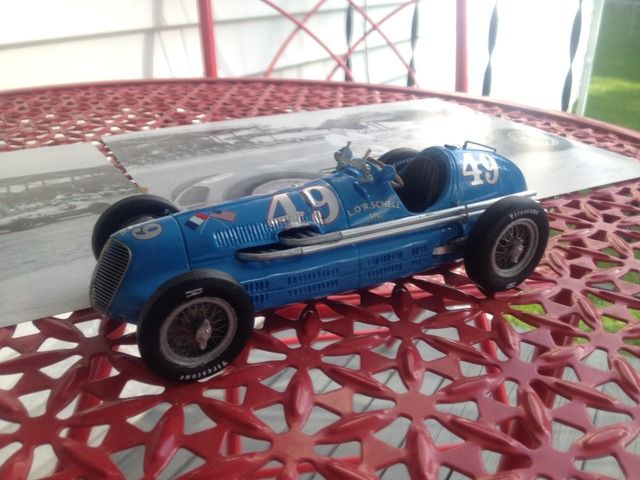
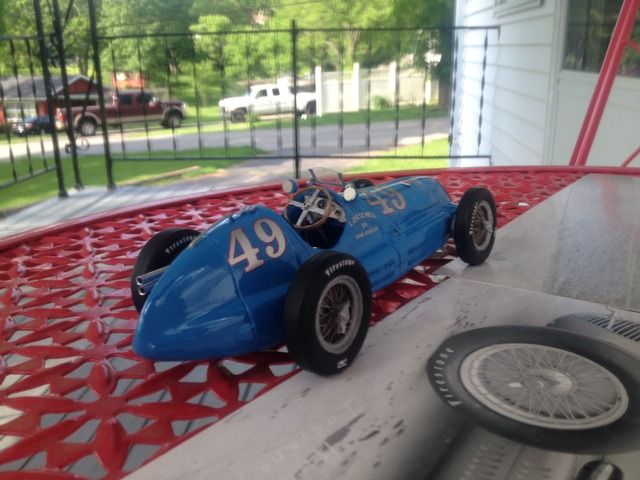
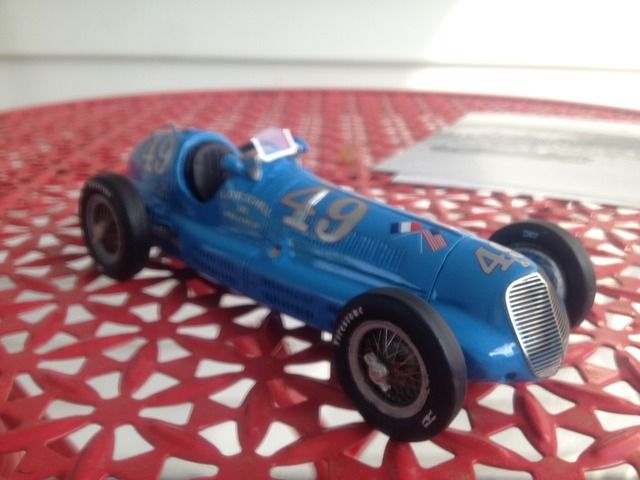
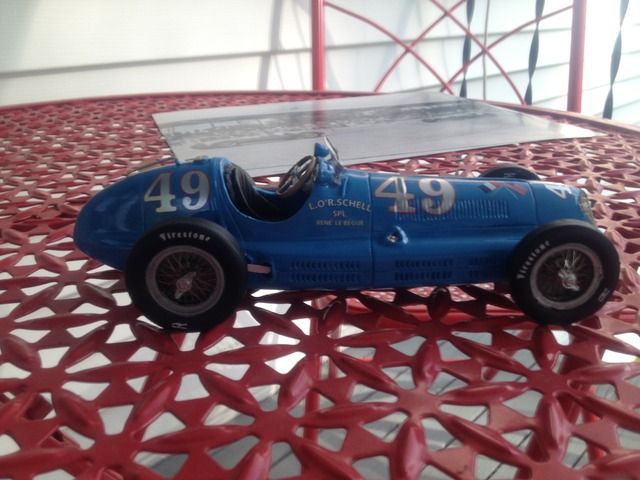
This car has an interesting story and I hope you don't mind a history lesson. By 1940 Europe found itself at war. Poland fell to the Germans and Soviets in the autumn of 1939 and old allies England, France and Belgium once again stared across the Western Front at their German foes.
In an effort to boost morale, American expatriate and racing fan Lucy O'Reilly Schell suggested that two French drivers go to the U.S. and compete in the Indianapolis 500. The French government agreed and tabbed Grand Prix star René Dreyfus and up-and-comer René LeBegue to drive two Maseratis procured for the race.
One may ask why in the midst of the opening of the European portion of the most devastating war in history were two men in military service allowed to galavant off to Indianapolis and race the 500. While it was true there was a war on, but nothing was happening. This was a period alternately called the "Phony War", "Sitzkreig", "Twilight War", and the "Funny War." At this stage all was indeed quiet on the Western Front, both armies staring at one another but not actively engaged in combat. For seven months this was the status of operations. One side was not yet willing (the Allies) and the other not yet ready (the Germans) for a fight. Two men could ostensibly be spared.
Both drivers arrived and through a misunderstanding Dreyfus took a qualifying time that didn't get him into the field. In spite of attempts to let Dreyfus run on behalf of the drivers the officials stated it would not be fair to let him run. As it was LeBegue's engine blew in final practice so Dreyfus' engine went into LeBegue's car and both drove equal 250-mile stints in the car and finished tenth behind Wilbur Shaw's second consecutive win.
By then the French people could care less of the result. Germany invaded in the interim. The attack went surprisingly well, sending the Allies reeling. The armies were split and by the time of the 500 the British were evacuating Dunkirk and preparing for the onslaught they dreaded would come. Churchill had replaced Chamberlain as the Prime Minister. The French government had fled Paris and would surrender not long after. As well as the two Renés acquitted themselves, it didn't change the fact that France and Europe were in the midst of a nightmare.
LeBegue came back to the 500 in 1941 with a Talbot but couldn't make the field. He survived the war only to die by electrocution while taking a bath in 1946. Dreyfus stayed in America and opened a restaurant in New York popular with racers. Lucy O'Reilly Schell's son became the first American to get a podium in Formula One. The Allies liberated France in 1944 and defeated Germany in 1945. Racing the world over resumed, in Europe and Indianapolis.
The car is a new Gary Doucette kit painted Tamiya French Blue. The kit went together with no real trouble and was a fun build. The decals are great, however the bigger "49s" meant for the tail of the car are actually better suited based on the photos for the hood and I've placed them there. But that's a small quarrel. Thanks for looking!












